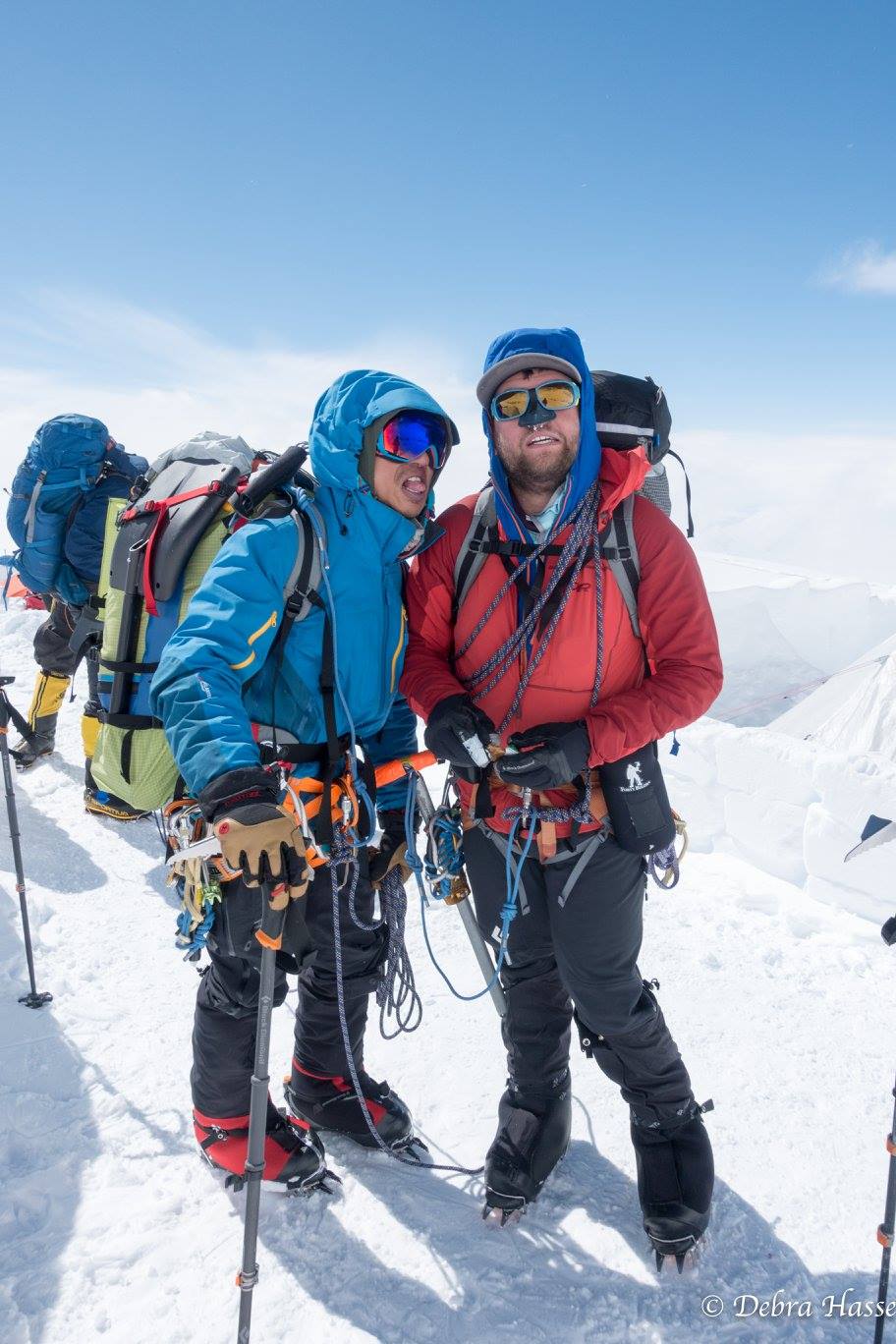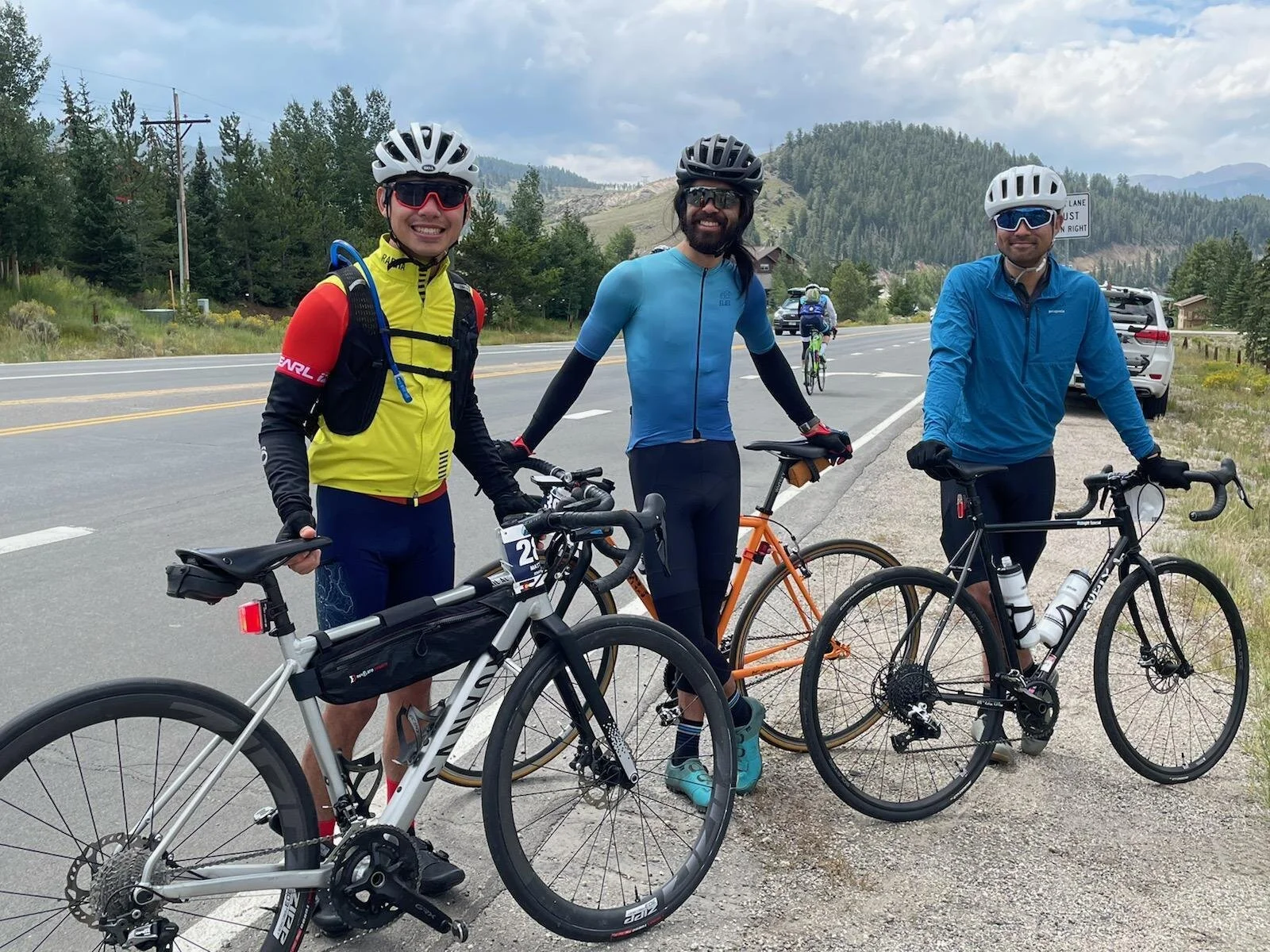Bob Cook Memorial Mount Evans Hill Climb 07/24/2021
Having moved out to Colorado for work this past fall, I was eager to commit to a hard goal to keep me motivated to train and stay healthy. Various mountaineering goals seemed a bit too objectively dangerous to do solo for the time being, but I managed to wrangle a few of my friends to register with me to do the Triple Bypass (Hosted by Team Evergreen). For those who do not know what the Triple Bypass is, it’s a 110 mile bike ride consisting of approximately 11,000’ of hill climbing on mountainous roads from Evergreen to Vail, CO (There’s even a double Triple Bypass which comes back the day after, but none of us wanted to do that…)
Fast forward to Friday (7/23) the day before the Bob Cook Memorial Mount Evans Hill Climb (HC), there’s torrential rain from a thunderous storm system causing Flash Floods in Idaho Springs. The forecast had called for less rain for the event day, but more scattered thunderstorms, where above 11.3k’ on the autoroad up Mount Evans is completely above tree line. Now I’ve wanted to take a step back and preface the decision making process leading up to this hill climb, so feel free to skip the next section to the pictures if the background is less interesting.
Along with moving to CO, I was diagnosed with Type 2 Diabetes Mellitus (T2DM) in the fall of last year as well. As many of the people I’ve met know that I’m an unusual case for this diagnosis, but the numbers and subcutaneous symptoms don’t lie. I’ve started a multi-faceted approach to living with this diagnosis that has included using a daily continuous glucose monitor (CGM), diet-modification (with professional dietary guidance), medication, and the obvious continuation of consistent training. Although I’ve titled this write-up primarily as my recounting of the my experience in climbing the Mount Evans HC autoroad via bicycle, I’ve wanted to dig a little deeper into how this climb is directly associated with my T2DM (personal numbers to come) and how I am planning on using this information to better assess my nutrition and hydration plan for the Triple Bypass. I hope that by the end I will have a more solid plan going into one of the hardest single effort bicycle rides I’ve ever attempted.
So the day before the Mount Evans HC, Deb and I drove to Idaho Springs to pick up my packet stuff and the flash flooding was definitely a damper on the mood, so much so that I was 85% sure I wasn’t going to even come to the start. As the evening progressed, I did notice a 5 hour weather window in the forecast from 5am-10am before scattered thunderstorms were even likely and my gut feeling was that 14er weather is so unpredictable, that even with the nastiness of the forecast, a sunny 60F day could spring up out of the clouds...or disaster would occur and I’d merely turn around from wherever I was and come back down to the moderate safety of the trees as quickly as the roads were hopefully dry. Emboldened by this weather window and feeling trained for this next ‘training’ ride, I went to bed at a reasonable 10pm, only to feel anxious and reluctantly watching the men’s road race taking place in the Tokyo 2020 Olympics halfway around the world just when the racing was getting racey. Thankfully I had to wake up at 4am, resulting in probably somewhere around 2.5hrs of sleep before climbing a 14er.
Gratuitous Pre-ride Bike shot, I had debated using a vest or a bike bag. Decided on the bike bag since it could better fit a HV hand pump
Luckily I didn’t sleep much and got up a little extra early in time to be the first in the drive-thru line at McDonald’s to get a hot breakfast. Unfortunately for me, the McDonald’s in Idaho Springs was understaffed and didn’t actually open until sometime after 5:30am, at least according to the nice morning manager. My breakfast then resulted in a microwaved gas station sausage egg and cheese with biscuit and diet coke for the pre-race menu. I decided against coffee since the last few early starts I’d done in pre-5am did nothing for my bowels or caffeine need at such an early time. So the first food of the day had been consumed, approximately 480 calories, somewhere in the margin of 60g of carbs, keep in mind I take my meds prior to breakfast and dinner and without exception even on big event days. The meds generally help keep the baseline sugars in my blood within a reasonable level for someone that has T2DM.

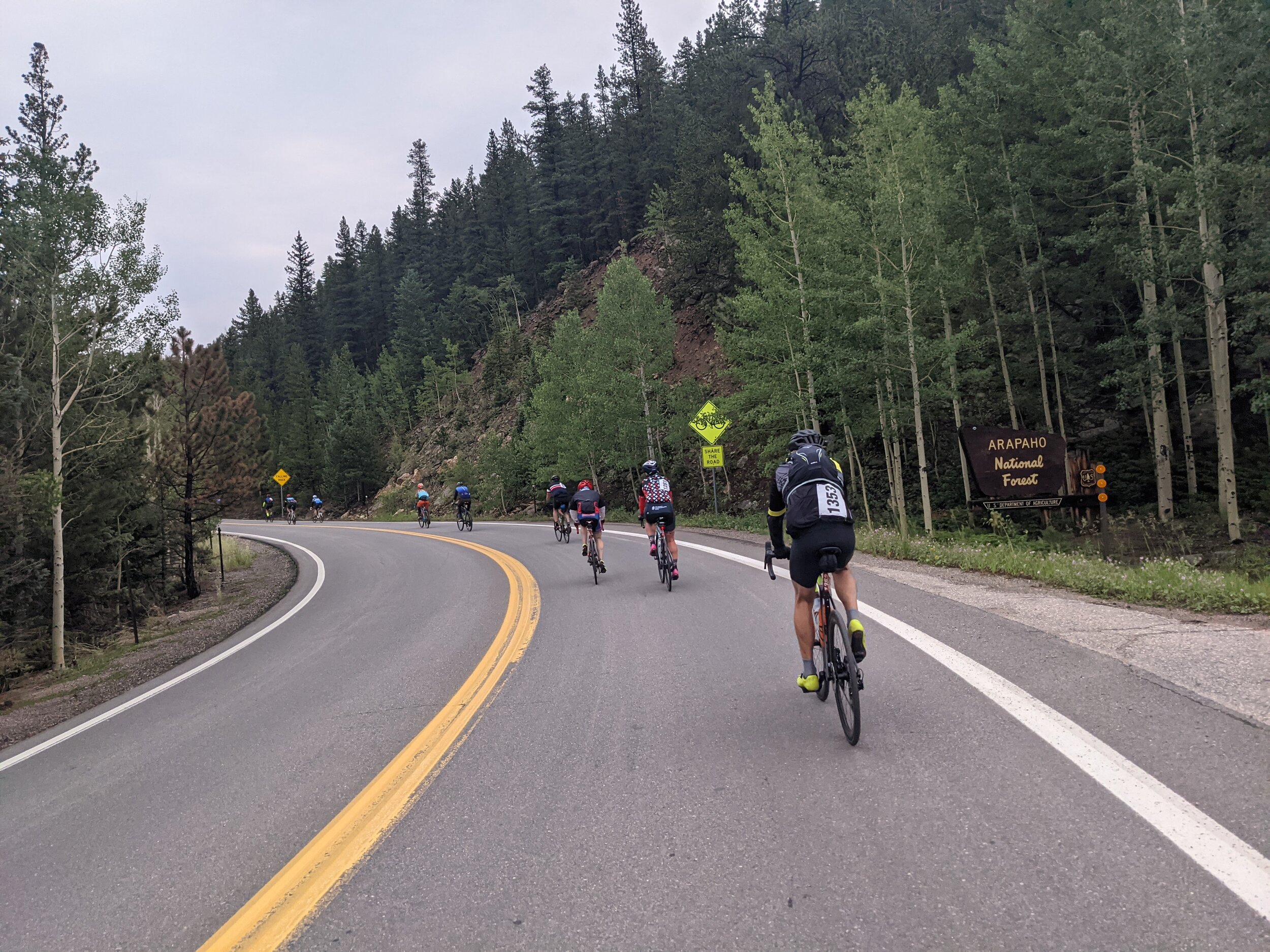
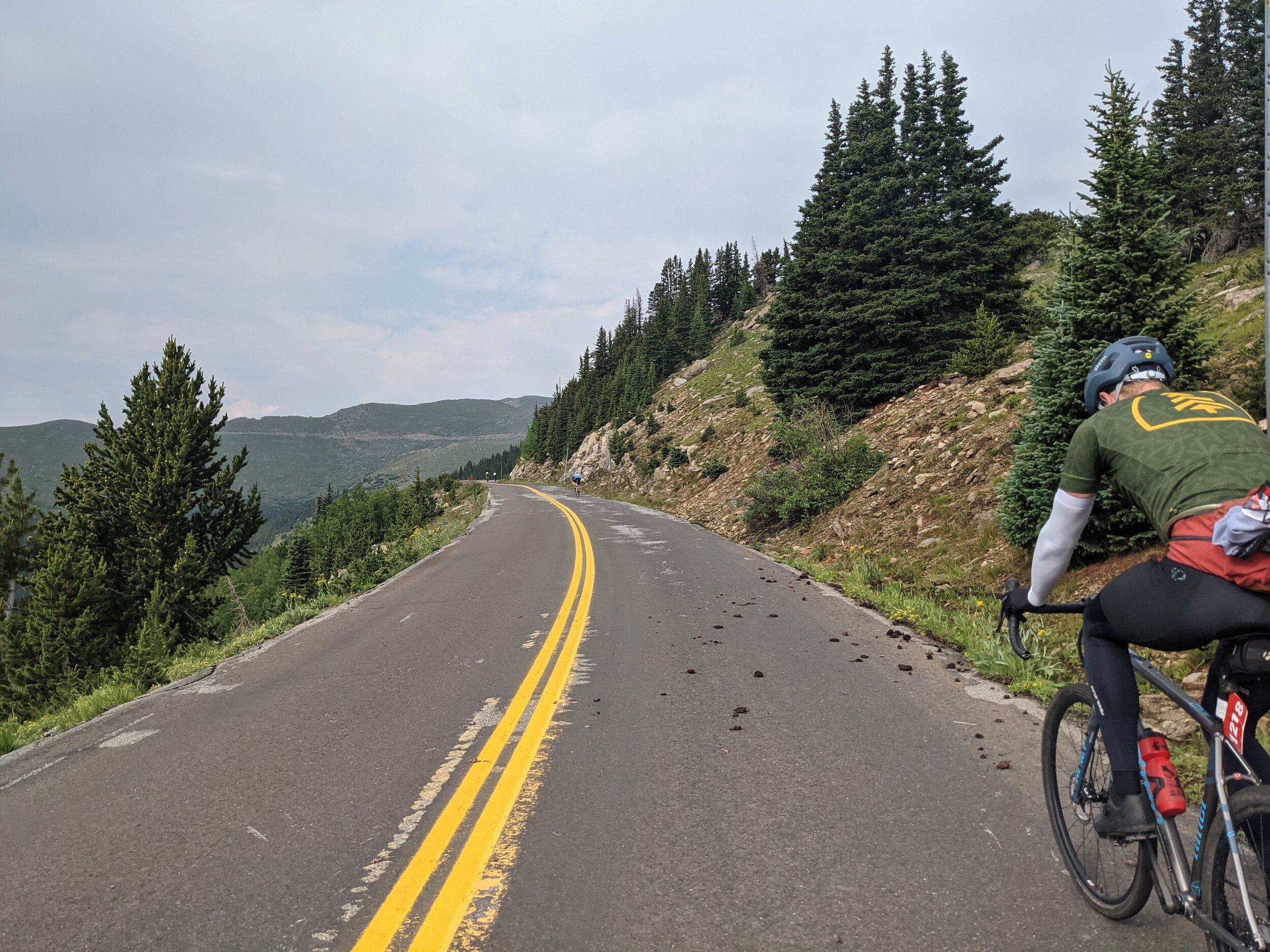
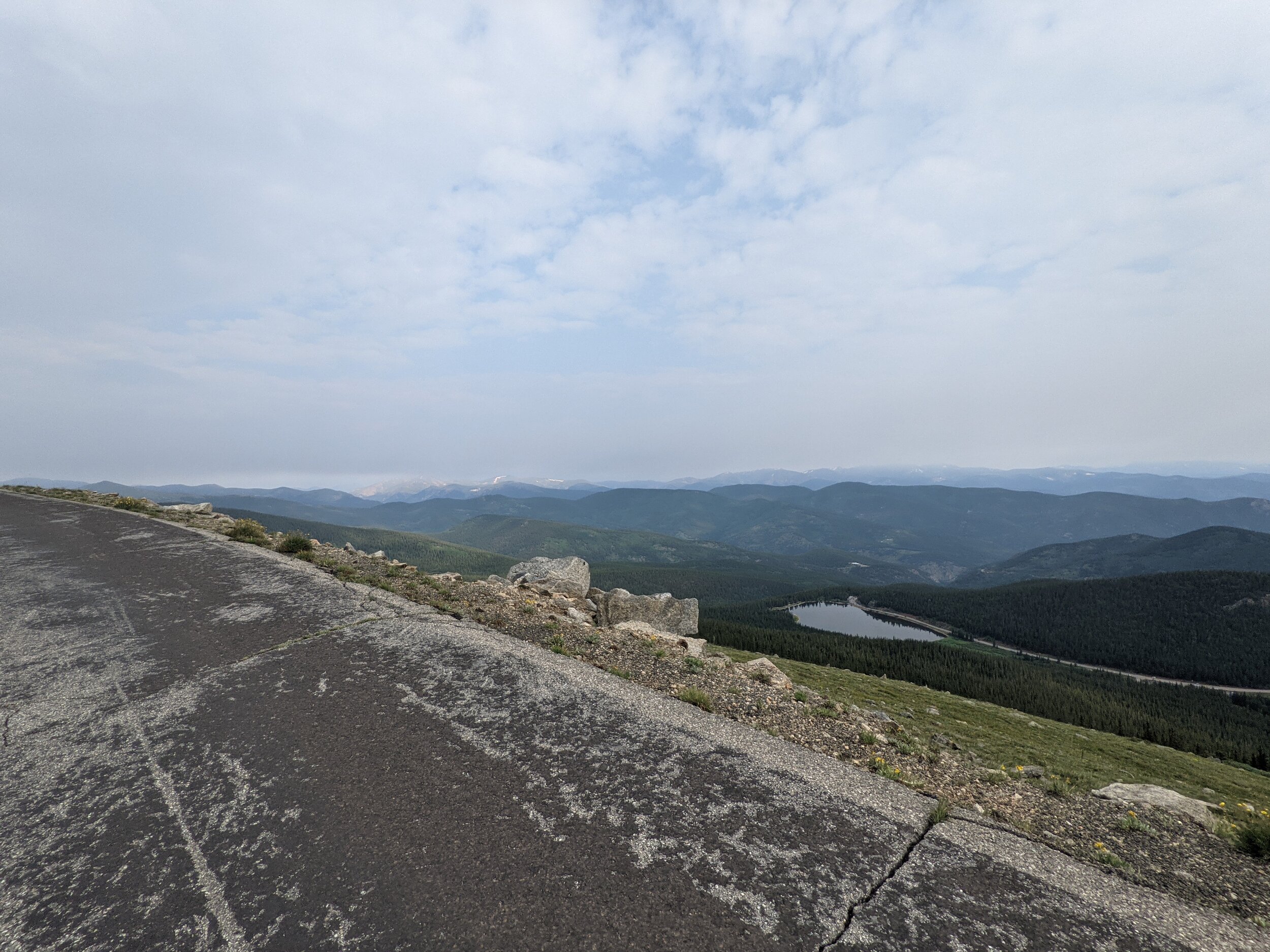
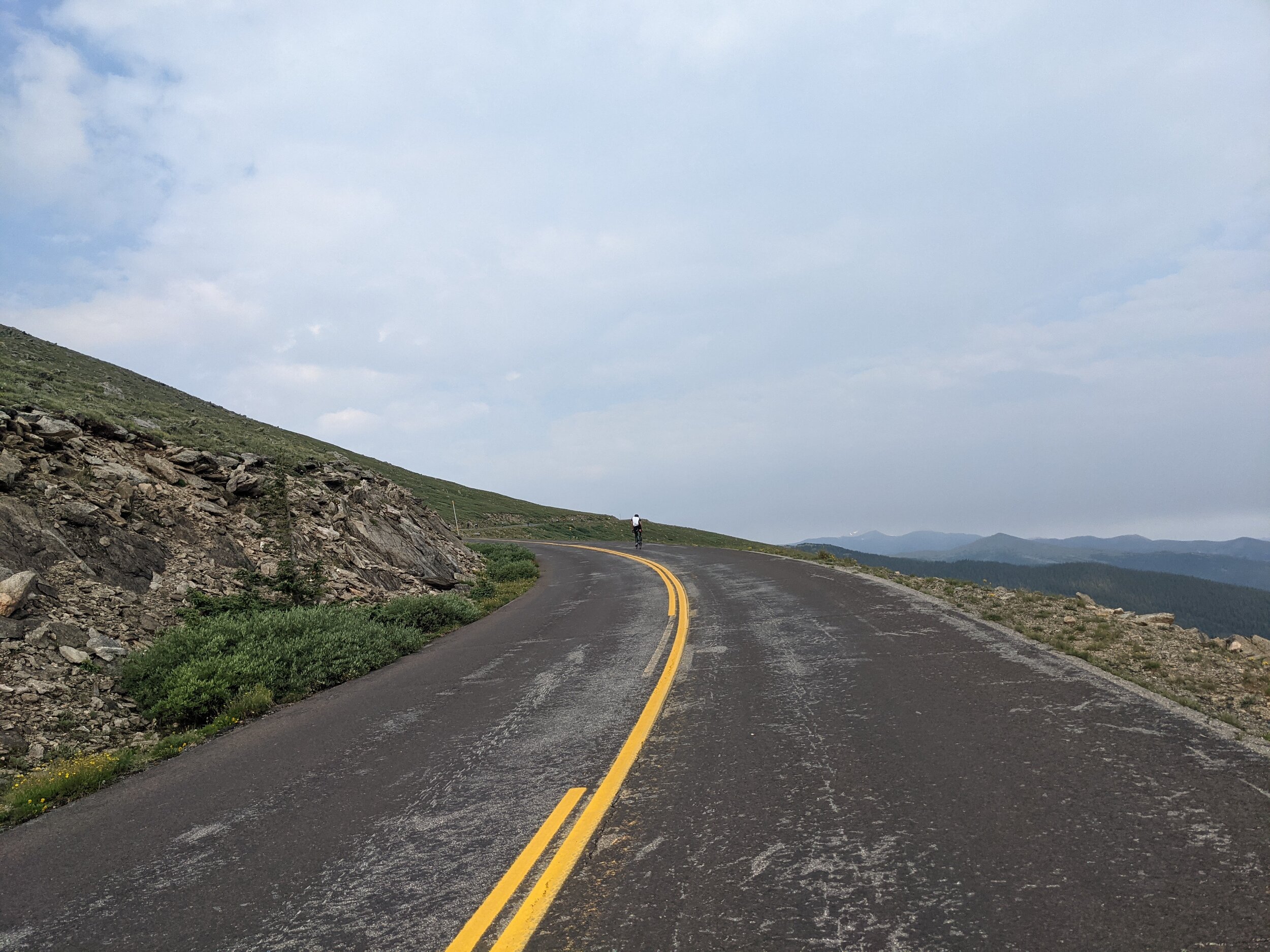
Getting to a big ride early has it’s benefits in that I got the last parking spot close to the starting line which was at the middle school in Idaho Springs. The primary parking area for the event for drivers is the Gold Digger’s stadium which is on the other side of I-70 and probably a 5 min bike ride to the start. As comfortable as I could be with hot food recently consumed and having used the facilities (surprisingly without coffee anyway) I made it to the start shivering with the temps around the mid 50s (Fahrenheit). After a few words to the gran fondo riders from one of the ride directors, the riders and I were all off. The cooler temps were nice in reality since I never felt hot all day. Unfortunately at my own fault, I succumbed to the amateur’s fallacy of going out too hard in the beginning.
The first segment from Idaho Springs to Echo Lake is just over 12 miles and 2800’ of elevation gain from the middle school. My Normalized Power (NP) was 158 but my average Heart Rate was 184bpm. Even for the youngest of trained athletes, I’m pretty sure everyone can relate that the HR data showed I worked maybe a little too hard for a 3.5hr effort, which was my goal for this ride. With my current weight + bike weight + gear + water, I estimated I needed to average approximately 2.5watts/kg to do this climb in about 3.5hrs and for me that’s somewhere between 125-130 watts. I felt great knowing I was within 15min of the lead group. At this unsustainable pace, I could even reach the summit in under 2.5hrs.
The rest of the climb is really where my gearing saved me and allowed me to finish let alone survive. From Echo Lake to the summit of Mount Evans is just under 15 miles with a whopping 3400’ gain (by biking standards, that’s a lot of climbing). Some elevation profiles for Mount Evans state the average gradient is 5%, but looking down at my head unit, I saw 7% most of the time. The struggle for me happened just after 4300’ gain from the start and about 2hrs and 10 minutes elapsed time of riding. I began suffering from a major left quad cramp, which within a few seconds lead to a right hamstring cramp (Arrow 2). Without dismounting and fear of ending my day then and there, I luckily packed a shot of Pickle Juice in my kit. I downed the pickle juice as quickly as I could muster while my cadence dropped to around 40rpm as I didn’t even have time to downshift to an easier gear. After the pickle juice, I managed to shift into some of my easiest gears (30T up front and 34T in the back) and soft pedal and after a few minutes, the intense cramping subsided. As many athletes understand, once a major cramp occurs, it becomes very challenging to continue pushing at or even near threshold, so my primary focus of the day switched into a ‘finish the fight’ mode. TrainingPeaks recorded my NP at 111 watts from the leg cramp to the summit, which was just under 9 miles and 1800’ with an average HR of 171 (this is roughly somewhere between the top of my z2 and bottom of z3). Resulting elapsed time on my headunit showed 3:51, but the race organizers stop watch has me recorded at 3:37, just slower than my goal. My overall NP from start to summit was 142, but again, my average HR was 178, much too high for this length and type of riding.
TrainingPeaks Excerpt
Arrow 1. Echo Lake Stop Arrow 2. Leg Cramp Arrow 3. Standing break (off bike before a short flat section).
That was the recounting of the ride, now onto the nutritional rollout of the day. I carried 2 water bottles (750ml) each containing 80 calories of Skratch Labs. In my bike bag, I had 4 sleeves of Clif Shot Blocks (100 calories each). Having eaten nearly 500 calories pre-race, I should only be in about a 1000 calorie deficit for a 4hr effort approximately. The root of the problem likely happened much earlier due to the high effort I put in early on to get to Echo Lake. I pushed into the 190bpm zone before any of the climbing began, which likely dehydrated my muscles more than I consumed. By the time I reached Echo Lake, I had drank about half of 1 bottle and eaten 1 sleeve of shot blocks. I didn’t eat anything at the aid station, but I did refill my bottle with whatever electrolyte drink they had (Nuun I think) and carried on upwards. Shortly after leaving the aid station at Echo Lake, I consumed about half another sleeve of caffeinated shot blocks (black berry). By the time I reached my standing break at ~12k’ elevation, I had downed all the water in my bottles as well as the little shot of pickle juice and rest of the gel chews that I started earlier.
Data from my CGM
Arrow 1. Gas Station Breakfast Arrow 2. Shotbloks Sleeve 1 Arrow 3. Shotbloks Sleeve 2 Arrow 4. Leg Cramp Arrow 5. Finished water bottles
At the summit, I managed to eat a handful of pretzels and drink about a half bottle of lemonade, which likely contributes to the sugar spike seen just after Arrow 5, little did it help since I was severely under caloried and dehydrated. I was wearing all my clothing and windproof rain jacket with temps in the low 40F’s with 15mph gusts, I was definitely shivering.
Shivering having waited in a small line for this picture while in a major calorie deficit and dehydrated
I think the hardest aspect of the day that I have to change before the Triple Bypass is pacing. In conjunction with better pacing is hydrating and fueling, neither of which was very effective this time around. I’m happy to have finished as this ride’s primary purpose was a training ride for an even bigger upcoming ride. I’ve missed my own time goal (just barely all things considered), and I am satisfied that I could tick another 14er off in a style I’ve never attempted before and will be excited to resume other mountain adventures with probably slightly less biking in the rotation. Cheers to lessons learned, surviving, and to more suffering!
